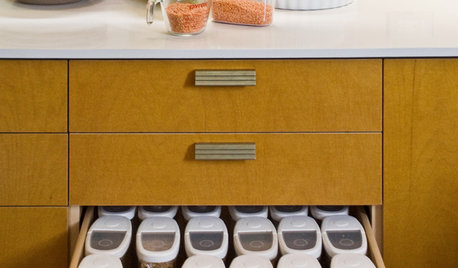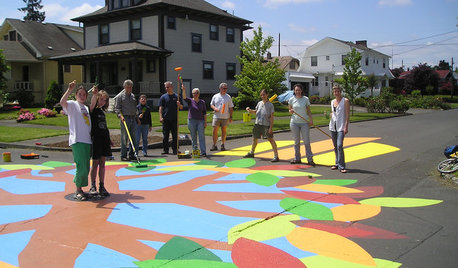Has anyone used this?
Joe BigBlue
6 years ago
Featured Answer
Sort by:Oldest
Comments (10)
dchall_san_antonio
6 years agogle2011
6 years agoRelated Discussions
Has anyone used Benjamin Moore Yorkshire Tan?
Comments (12)Thanks for the replies! I've been reading a LOT since finding this site and I can tell I will be addicted. I would have to classify my compulsion to constantly improve my home's aesthetics as... ILLNESS, really! At the very least - obsession. I just wish I had enough rooms & money to accommodate all my ideas. :) Ok I admit, I'm already addicted to the threads for different colors in the gallery. :*) I don't have any pics handy, but my palette is rich earth tones, and I'm partial to natural fabrics and hand-made accessories. Wood is unfortunately not white. :( It's a light-medium oak with orange undertones. *sigh* I did finally find some pictures of Yorkshire Tan in action -- and in these pics I don't think it's too dark, but these rooms also have a lot more white in them than mine does. See the "afters" here. I may need to revisit the Benjamin Moore store and check out the color(s) higher on the strip, especialyl since this room only has two windows and they get onyl indirect light after sunrise... AND because I'm not a fan of white ceilings....See MoreOK, has anyone used (or seen used) Dutchlap vinyl siding?
Comments (1)I have it on my own house. It looks fine and gives the house am appearance that makes it stand out from others with traditional double 4 siding IMHO....See Moreah HA! Qortstone! Has anyone used this counter matieral?
Comments (4)when web searching for quartz, i came across sites in other languages, where they had a selection of manufacturers that i had never heard of. Searching more, i found some of them had a foothold stateside. I contacted them, got samples, and found them all the same. On all their web sites they all say they are all the same. Hth...See MoreHas anyone used BM Classic Gray for kitchen cabinets?
Comments (1)Did you ever paint your kitchen cabinets classic gray? Will you send a picture! ?? Thanks!!! :-)...See Moredchall_san_antonio
6 years agoUser
6 years agolast modified: 6 years agodchall_san_antonio
6 years agoUser
6 years agodchall_san_antonio
6 years agoUser
6 years agolast modified: 6 years agoUser
6 years agolast modified: 6 years ago
Related Stories

KITCHEN DESIGN6 Clever Kitchen Storage Ideas Anyone Can Use
No pantry, small kitchen, cabinet shortage ... whatever your storage or organizing dilemma, one of these ideas can help
Full Story
BUDGET DECORATINGThe Cure for Houzz Envy: Living Room Touches Anyone Can Do
Spiff up your living room with very little effort or expense, using ideas borrowed from covetable ones
Full Story
CLOSETSThe Cure for Houzz Envy: Closet Touches Anyone Can Do
These easy and inexpensive moves for more space and better organization are right in fashion
Full Story
DECORATING GUIDESThe Cure for Houzz Envy: Guest Room Touches Anyone Can Do
Make overnight guests feel comfy and cozy with small, inexpensive niceties
Full Story
MUDROOMSThe Cure for Houzz Envy: Mudroom Touches Anyone Can Do
Make a utilitarian mudroom snazzier and better organized with these cheap and easy ideas
Full Story
KITCHEN DESIGNThe Cure for Houzz Envy: Kitchen Touches Anyone Can Do
Take your kitchen up a notch even if it will never reach top-of-the-line, with these cheap and easy decorating ideas
Full Story
HOME OFFICESThe Cure for Houzz Envy: Home Office Touches Anyone Can Do
Borrow these modest design moves to make your workspace more inviting, organized and personal
Full Story
LAUNDRY ROOMSThe Cure for Houzz Envy: Laundry Room Touches Anyone Can Do
Make fluffing and folding more enjoyable by borrowing these ideas from beautifully designed laundry rooms
Full Story
COMMUNITYCommunity Building Just About Anyone Can Do
Strengthen neighborhoods and pride of place by setting up more public spaces — even small, temporary ones can make a big difference
Full Story
BUDGET DECORATINGThe Cure for Houzz Envy: Entryway Touches Anyone Can Do
Make a smashing first impression with just one or two affordable design moves
Full Story



User